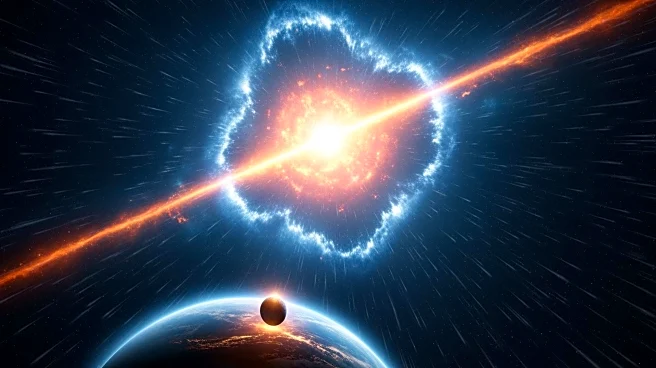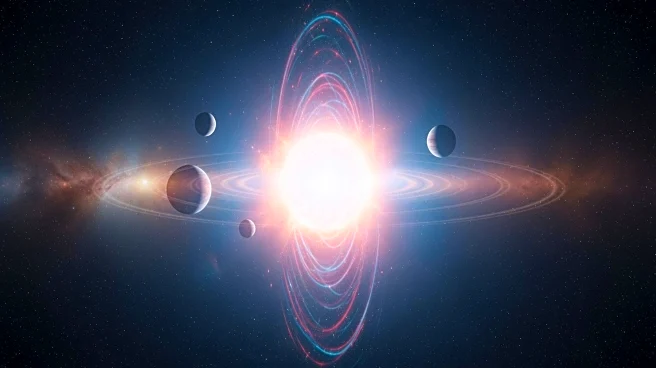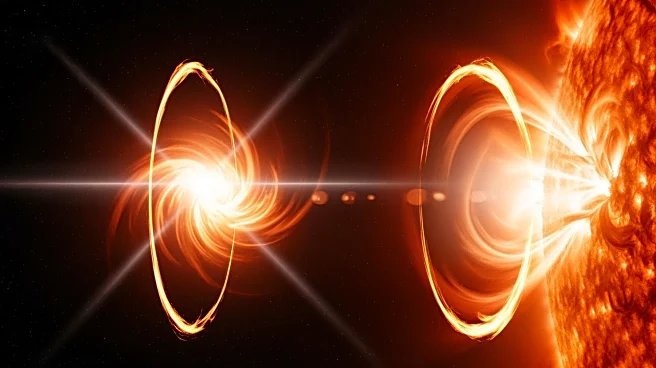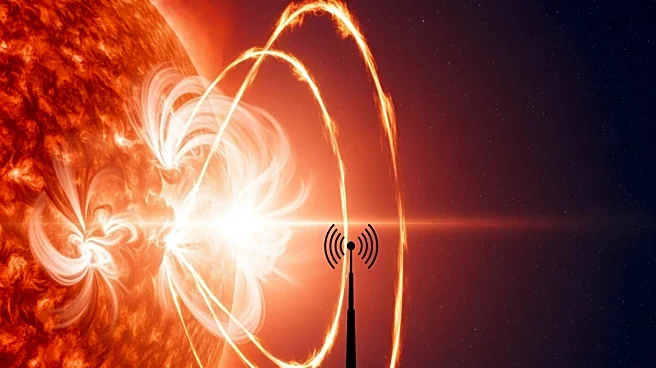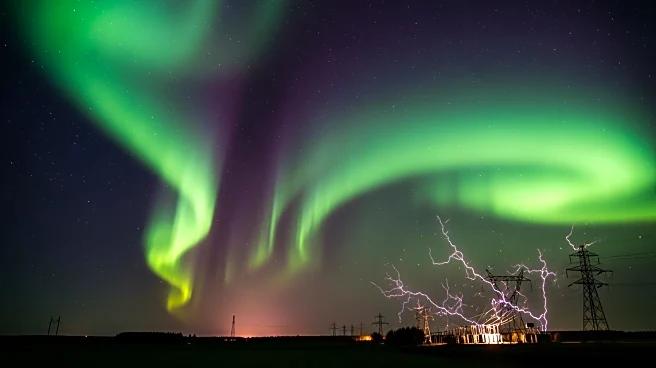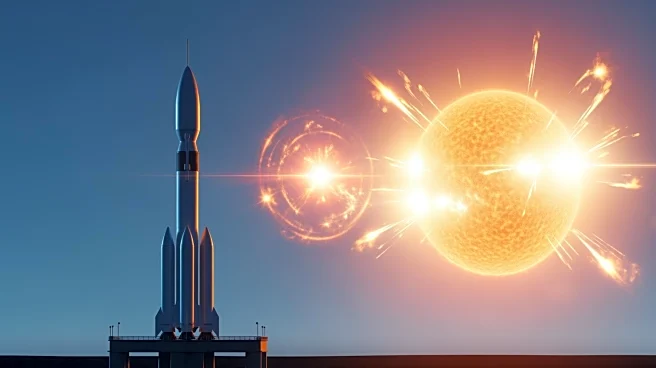What's Happening?
Astronomers have observed a massive explosion from a star outside our solar system, marking the first detection of a coronal mass ejection (CME) from another star. This event, originating from the red
dwarf star StKM 1-1262, was recorded at a speed of 5.3 million miles per hour, a velocity rarely seen in solar CMEs. The explosion is significantly more powerful than any CME produced by our sun, with the potential to strip away the atmosphere of any nearby planet. The discovery was made using the Low Frequency Array radio telescope and new analytic software, which detected a type II radio burst indicating the presence of a CME. This finding is crucial for understanding the impact of stellar activity on exoplanets, particularly those orbiting red dwarf stars, which are known for their intense magnetic fields.
Why It's Important?
The detection of a CME from a star beyond our solar system is a groundbreaking development in the study of space weather and its effects on exoplanets. Red dwarf stars, which make up over 70% of the stars in the Milky Way, often host planets in close proximity due to their smaller habitable zones. The intense magnetic activity of these stars raises questions about the habitability of their planets, as frequent and powerful CMEs could strip away planetary atmospheres, rendering them inhospitable. This discovery provides valuable insights into the violent nature of red dwarf stars and their potential to impact planetary environments, which is essential for assessing the likelihood of life beyond Earth.
What's Next?
Researchers aim to further investigate how red dwarf stars generate and release such massive energy bursts and the implications for nearby planets. The upcoming Square Kilometre Array, set to be completed in 2028, will enhance the ability to detect CMEs from other stars, potentially leading to more discoveries. Understanding the frequency and impact of these events will be crucial for determining the habitability of exoplanets orbiting red dwarf stars. Follow-up studies are expected to verify the findings and explore the broader implications for space weather and planetary atmospheres.
Beyond the Headlines
The detection of CMEs from other stars opens new avenues for studying extrasolar space weather and its effects on planetary systems. This research could lead to a deeper understanding of the early stages of stellar evolution and the conditions necessary for life. The ability to monitor and analyze CMEs from distant stars may also contribute to advancements in radio astronomy techniques and the development of new observational technologies.
